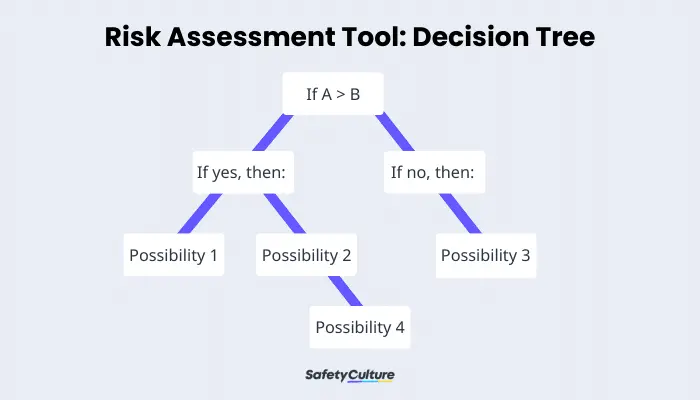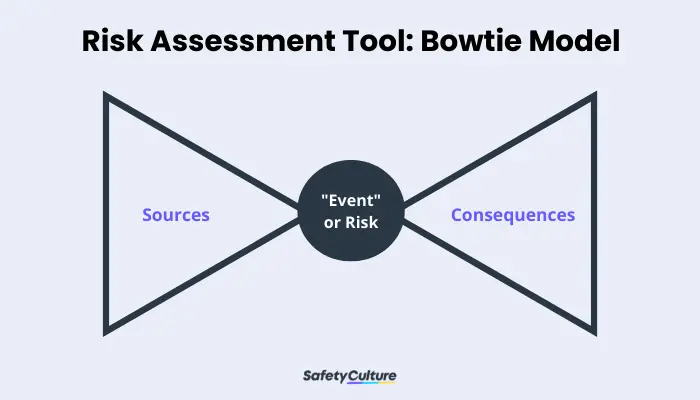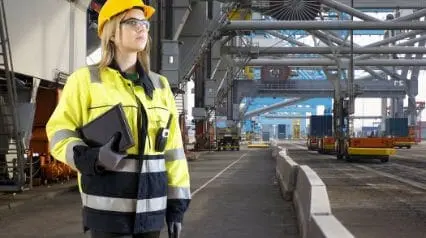What are Risk Assessment Tools?
Risk assessment tools, sometimes called “risk assessment techniques,” are procedures or frameworks that can be used in the process of assessing and managing risks. There are many ways to assess risk, making risk assessment tools flexible and easy to use for a variety of jobs, industries, and needs.
Most Commonly Used Risk Assessment Tools
There are four commonly used risk assessment tools in different businesses. All of them are used often and are easily applicable to different situations. These tools are:
- Risk matrix
- Failure Mode and Effects Analysis (FMEA)
- Decision Tree
- Bowtie Model
Risk Matrix
| Likelihood | Very Likely | Likely | Unlikely | Highly Unlikely | |
| Consequences | Fatality | High | High | High | Medium |
| Major Injuries | High | High | Medium | Medium | |
| Minor Injuries | High | Medium | Medium | Low | |
| Negligible Injuries | Medium | Medium | Low | Low | |
A risk matrix is a visual representation of risks laid out in a diagram or a table, hence its alternate name as a risk diagram. Here, risks are divided and sorted based on their probability of happening and their effects or impact. A risk matrix is often used to help prioritize which risk to address first, what safety measures and risk mitigation plans to take, and how a certain task should be done. Risk matrices can come in any size and number of columns and rows, depending on the project and risks being discussed.
FMEA
The Failure Mode and Effects Analysis (FMEA) risk assessment tool was first discovered in the 1940s by the US military to identify all possible issues or failures in a design, process, product, and service. This tool is often used during a product or service’s design or proposal stage to actively study possible risks and discover their effects. FMEA has two parts to it:
- Failure Modes: the failures, problems, and issues that occur
- Effects Analysis: the analysis of the failures’ effects
Decision Tree

Risk Assessment Tool: Decision Tree
The decision tree risk assessment tool works by providing project managers a template to calculate and visualize the values of different results and the likelihood of achieving them. In some cases, a decision tree is also often used to help calculate the value of a project, product, or service.
To use this tool, one starts with one element, product, or service they want to evaluate, and then creates different branches from it with different goals. When carried out, the final product looks like a flowchart similar to a tree with different branches, hence the name.
Bowtie Model

Risk Assessment Tool: Bowtie Model
The Bowtie Model risk assessment tool aims to show the causal links between different sources of risks and their consequences. The left side of the diagram shows what causes the risk, the right shows their potential outcomes, and then both sides meet in the middle with a single risk called “Event.” The left and right sides of the Event are larger and wider as many sources may lead to different consequences, but still be centered around one risk. When drawn out, the model starts to look like a bowtie.
Uses
Risk assessment tools are an essential part of performing risk assessments and risk management tasks. Not only do they make risk assessments easier, but they also help put different risks into perspective and help create contingency plans better.
Some things risk assessments tools can help with are:
- Creating and spreading awareness on different hazards and risks
- Identifying who are most at risk of encountering or suffering from certain risks
- Determining what control measures and programs are required for which risks and what need to changed in existing rules
- Preventing and mitigating injuries, fatalities, and illnesses
- Meeting legal requirements on certain industry-specific tasks where applicable




